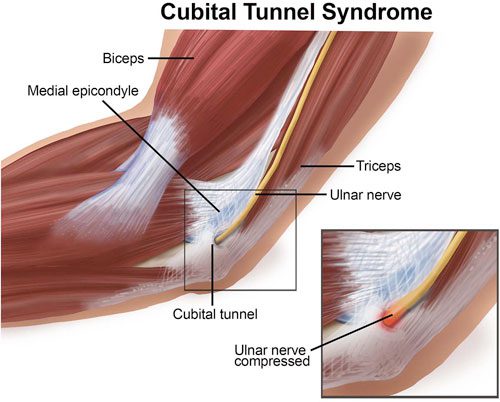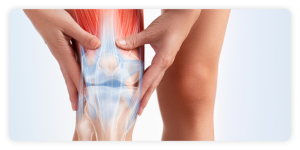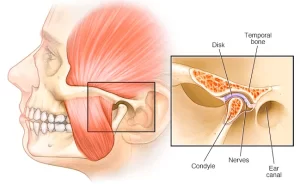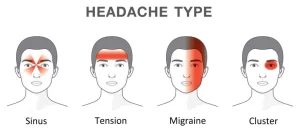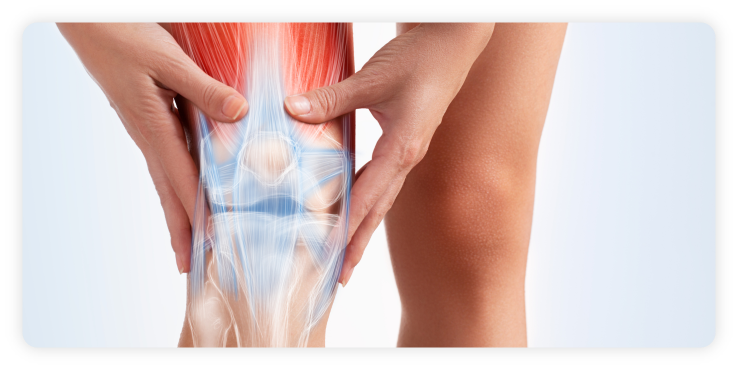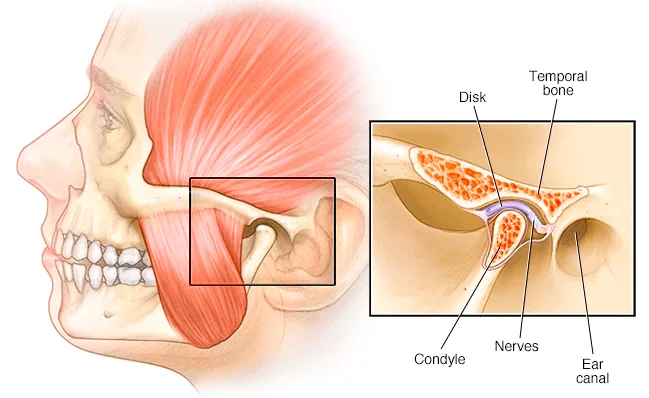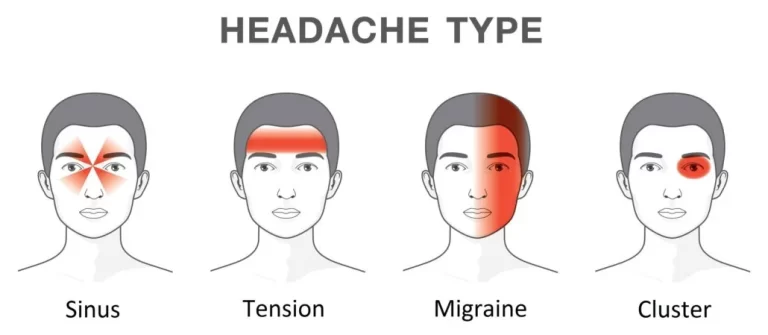What is Cubital Tunnel Syndrome?
Cubital Tunnel Syndrome happens when the Ulnar nerve, which passes through the Cubital Tunnel on the inside of the elbow, is injured, and becomes inflamed. This syndrome causes a pain that feels a lot like the pain you feel when you hit the “funny bone” in your elbow. The “funny bone” in the elbow is actually the Ulnar nerve, a nerve that crosses the elbow. The Ulnar nerve starts in the side of your neck and ends in your fingers.
What causes Cubital Tunnel Syndrome?
Cubital Tunnel Syndrome often results from prolonged stretching or pressure on the Ulnar nerve. When the arm is bent for a long time, it stretches the Ulnar nerve, creating a traction force that decreases the blood flow to the nerve, and may cause nerve irritation. Prolonged pressure on the nerve may occur when the elbow and lower arm lean against a table, and the Ulnar nerve is pushed over the bone.
Symptoms of Cubital Tunnel Syndrome
Symptoms of Cubital Tunnel Syndrome may include numbness and tingling in the hand, ring, and little finger, especially when the elbow is bent. Numbness and tingling may also happen a lot at night. Other symptoms such as hand pain, weak grip and clumsiness, may happen due to muscle weakness in the affected arm and hand. Aching pain on the inside of the elbow is also another common symptom.
Cubital Tunnel Syndrome Treatment
Physical therapy is helpful for Cubital Tunnel Syndrome. Treatment program will focus on reducing pain and improving the functional ability of the elbow. Apart from manual therapy, specific range of motion exercises to help the elbow return the full length to the muscles of the arm that have shortened, due to protective posturing will be prescribes. Nerve gliding exercises and stretches will also be incorporated to promote blood flow to the Ulnar nerve. As treatment progresses, lifestyle recommendations and functional training will be taught to avoid positions that compress, or put prolonged stretch on the Ulnar nerve. If in doubt, please seek professional advice.
Check out our popular articles: Diastasis Recti, Tight Back Muscles, Irritable Bowel Syndrome (IBS), Temporomandibular Joint (TMJ) Dysfunction, Tennis Elbow, Wrist Tendon Injury, Sciatica, Whiplash, Hernia, Herniated Disc (Slipped Disc).
